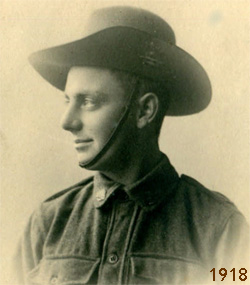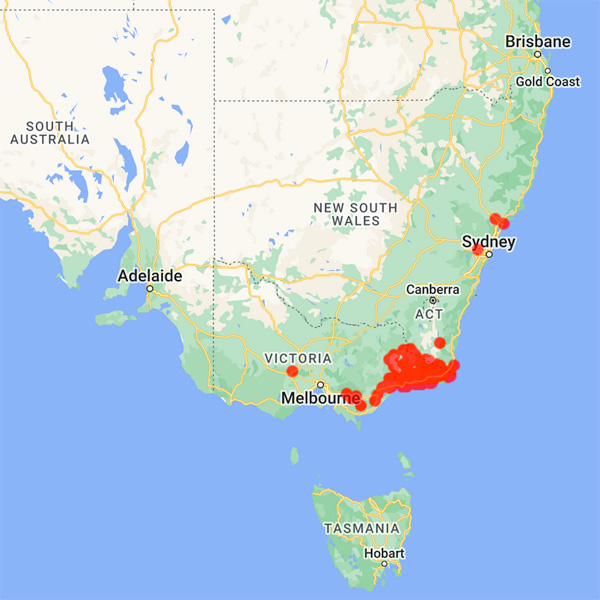
Council of Heads of Australasian Herbaria
Australian National Herbarium
Biographical Notes
 |
Council of Heads of Australasian Herbaria |
 Hunter, William (Bill) (1893 - 1971)
Hunter, William (Bill) (1893 - 1971)Born in Tatura, Vic, in 1893; died in Bairnsdale, Vic, in January 1971.
William was the second of six
children to parents who owned
a drapery store.
After schooling
in Tatura, William won a
scholarship to do technical
training, becoming an
apprenticed surveyor at age 18
years.
Even in childhood, William
showed evidence of several
talents which were to serve him
well throughout life — he loved
drawing, he had keen observational skills including an eye for detail, and he loved botany.
Along with his skills at drawing and draftsmanship, William also
developed an interest in photography. Sadly, none of his
photographs appear to have survived.
After enlistment in November 1915, William
joined a mining and tunnelling company and
served with the 2nd Pioneer Battalion. The
army took him to England and France (in
March 1917) where he served until the end of
the War.
After the War, he was able to
attend the Air Survey School at
Southampton for six months in 1919, also
doing some touring and photographing
around England and Scotland as well. He then returned to his profession of surveying for the Victorian government.
During the 1930s, William's parents left their business at Tatura and
moved to Bairnsdale (possibly to join William). Here they lived until
their deaths in 1937 and 1949.
At about this time, William's interest in botany was encouraged by
having met several keen naturalists and he became a member of the
Field Naturalists Club of Victoria. This passion for botany fitted in
perfectly with his profession as a surveyor in some of the most remote
areas of Victoria. For instance, while surveying for potential
settlement blocks at Suggan Buggan and Ingeegoodbee for about two
years 1938/39, he made extensive botanical collections. He even
compiled an annotated census of all known native plants in East
Gippsland.
One of his contacts was the well-known naturalist, Norman Wakefield
who later honoured William by suggesting that the Snowy River Wattle be named after him, (
Acacia
hunteriana now
A. boormanii).
His name is honoured in the 'William Hunter Flora Reserve' at Marlo.
After his mother's death in 1949, William moved from Bairnsdale to Marlo, and in 1954 he built a small
cottage in the bush on what was then the northern outskirts of Mallacoota. Here he lived until his failing
health led to his move to the Bairnsdale Home and Hospital where he died shortly afterwards in January
1971, aged 77 years.
Source: Willis, J.H. (1949) Botanical pioneers in Victoria - III. Victorian Naturalist 66:123-128;
pers com Christopher Parker 11/7/2008;
http://orbosthistory.com.au/newsletters/142%20N%20-%20William%20(Bill)%20Hunter,%20surveyor%20and%20botanical%20collector%20-%20May%20Leatch.pdf
Portrait Photo: 1918, Orbost History site above.
Data from 921 specimens in National Herbarium of Victoria
